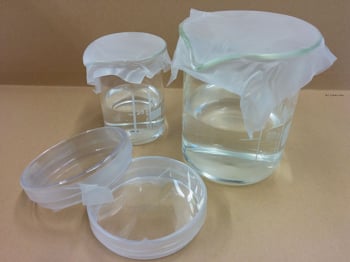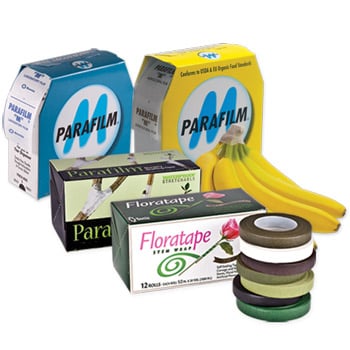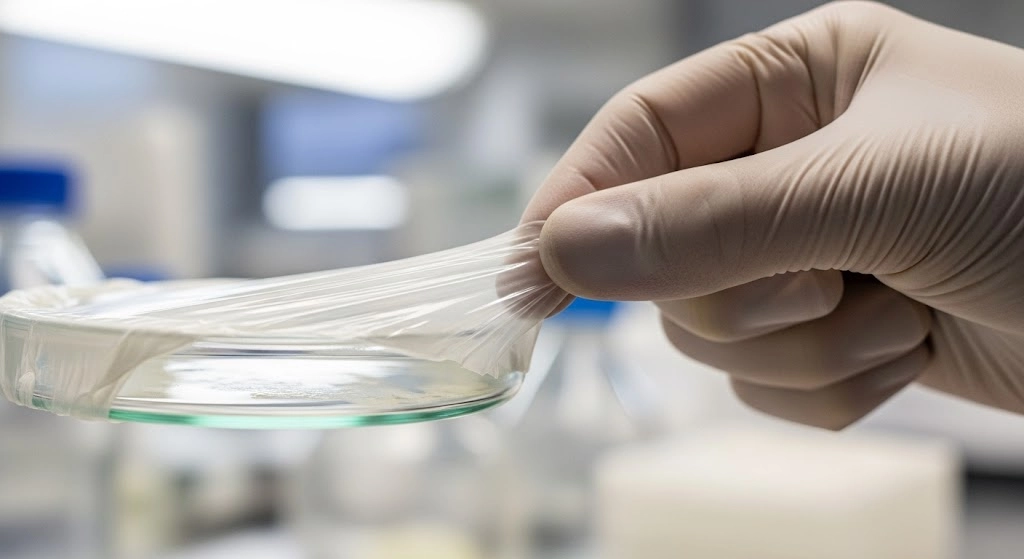Parafilm: A ubiquitous laboratory staple with an interesting array of uses
GEMINI (2025)
Chances are anyone who has spent time in a laboratory environment has encountered Parafilm.
The tough, stretchy, waxy, plastic wrap has many common uses and is a necessary fixture in a wide range of laboratory settings. Parafilm also has many lesser-known uses, making it not just an ordinary laboratory helper but a product with a diverse resume of responsibilities.
What is Parafilm?

Parafilm M Laboratory Film is a paraffin plastic film which typically comes in rolls with square demarcations printed on a paper backing. It is a ductile, malleable, waterproof, odorless, translucent, and cohesive thermoplastic, making it extremely versatile under a number of conditions. Originally commercialized in the 1930s and intended for map mounting, Parafilm was quickly adopted by lab scientists for a myriad of uses.
How is Parafilm used?
Parafilm is most commonly used for sealing and protecting vessels such as test tubes, cuvettes, and petri dishes. Since Parafilm is both stretchy and self-sealing, it is easily used on lab containers of all shapes and sizes.

Beyond these typical lab applications, many additional uses have taken advantage of the hydrophobic nature of the film. For instance, beads of aqueous liquid can be “dotted” on the surface, thereby making those samples easier to load into electrophoresis gels and other devices. In fact, any technique involving microliter volumes of aqueous solution can theoretically be performed using Parafilm. Of course, there are notable exceptions such as Polymerase Chain Reaction (PCR), which require sterile conditions to prevent the risk of contamination. Parafilm is also permeable by gasses such as oxygen, carbon dioxide, and water vapour.
Parafilm Outside the Lab

Interestingly, Parafilm has a prolific role in multiple areas outside of the traditional lab. A few notable uses include:
- In horticulture, as a ‘grafting tape’ to wrap plant grafts together and prevent drying
- In agriculture, as a protective layer on the stems of freshly cut produce such as bananas to extend their shelf life.
- In art, as a non-adhesive masking material during airbrushing to protect the finish.
- In entomology, as a membrane to feed hematophagous insects such as mosquitoes and bedbugs.
- And in medical diagnostics, as a low-cost way to produce point-of-care diagnostics in developing countries where expensive equipment and tests are not accessible.
Parafilm not only serves a variety of traditional laboratory functions, but it has many adopted uses in a diverse range of fields as well. It will be interesting to see what other engagements Parafilm will entertain in the future.
FAQs about Parafilm
What is Parafilm?
Parafilm is a flexible, waxy, and waterproof plastic film that's commonly used in labs.
How is Parafilm used in a lab?
Parafilm's most common lab use is to seal and protect containers like test tubes, beakers, and petri dishes.











